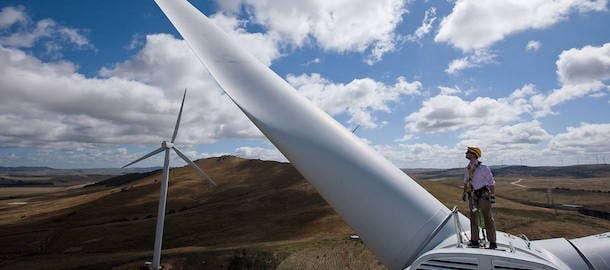
Last month in Paris, nearly 200 countries reached a new global agreement on climate change. Today, 500 investors have gathered at the United Nations in New York to talk about how to finance it.
The historic agreement reached in Paris provides a new framework for action on climate change and calls on all sectors to act.
Thanks to convenings like the Investor Summit on Climate Risk, which the United Nations Foundation organized with our partners Ceres and the UN Office of Partnerships, the investment community understands that it needs to be at the forefront of the global transition to a low-carbon economy envisioned by the Paris Agreement.
Climate change is a global national security, public health, environmental, and economic risk, but tackling it is a multi-trillion dollar investment opportunity. In order to limit global warming to 2 degrees Celsius above pre-industrial levels and avoid the worst effects of climate change, the International Energy Agency says the world needs to invest an additional $44 trillion in clean energy by 2050 – that’s more than $1 trillion per year for the next 36 years!
Transforming the world’s energy systems will take decades – but the earlier we get started, the better off we’ll be. Technology is moving us toward a day when the cleanest energy is also the cheapest, and the sooner the better. Fossil fuels face a new risk of becoming stranded assets – resources that can’t be economically recovered, either because of cheaper alternatives or new policies and regulations.
This energy transformation will also help the world’s billion-plus people who do not have access to electricity leapfrog past fossil fuels toward clean, locally generated power.
As we heard today at the Investor Summit, there are myriad opportunities for the investment community to accelerate the global transition to clean energy, including:
– Properly assessing the risks that climate change poses to investments – whether they be risks related to storms, droughts, and sea-level rise or to new policies and regulations;
– Investing in clean energy opportunities that offer competitive, risk-adjusted returns across asset classes, not only equities, but also bonds – the world’s largest asset class;
– Identifying and developing new products in clean energy that are appropriate for institutional investors;
– Engaging with companies to improve corporate practices on clean energy and climate change; and
– Supporting policy change by encouraging governments to establish policies that limit greenhouse gas emissions and stimulate investment in clean energy – be it energy efficiency, renewable energy, or clean transportation.
Now is the time to act – to shift our focus from pledges to implementation and convert commitments to clean kilowatt-hours.
Governments led the way in Paris. Now it’s time for the financial community to lead the way to a low-carbon economy.
Photo: UNFCCC



 View All Blog Posts
View All Blog Posts